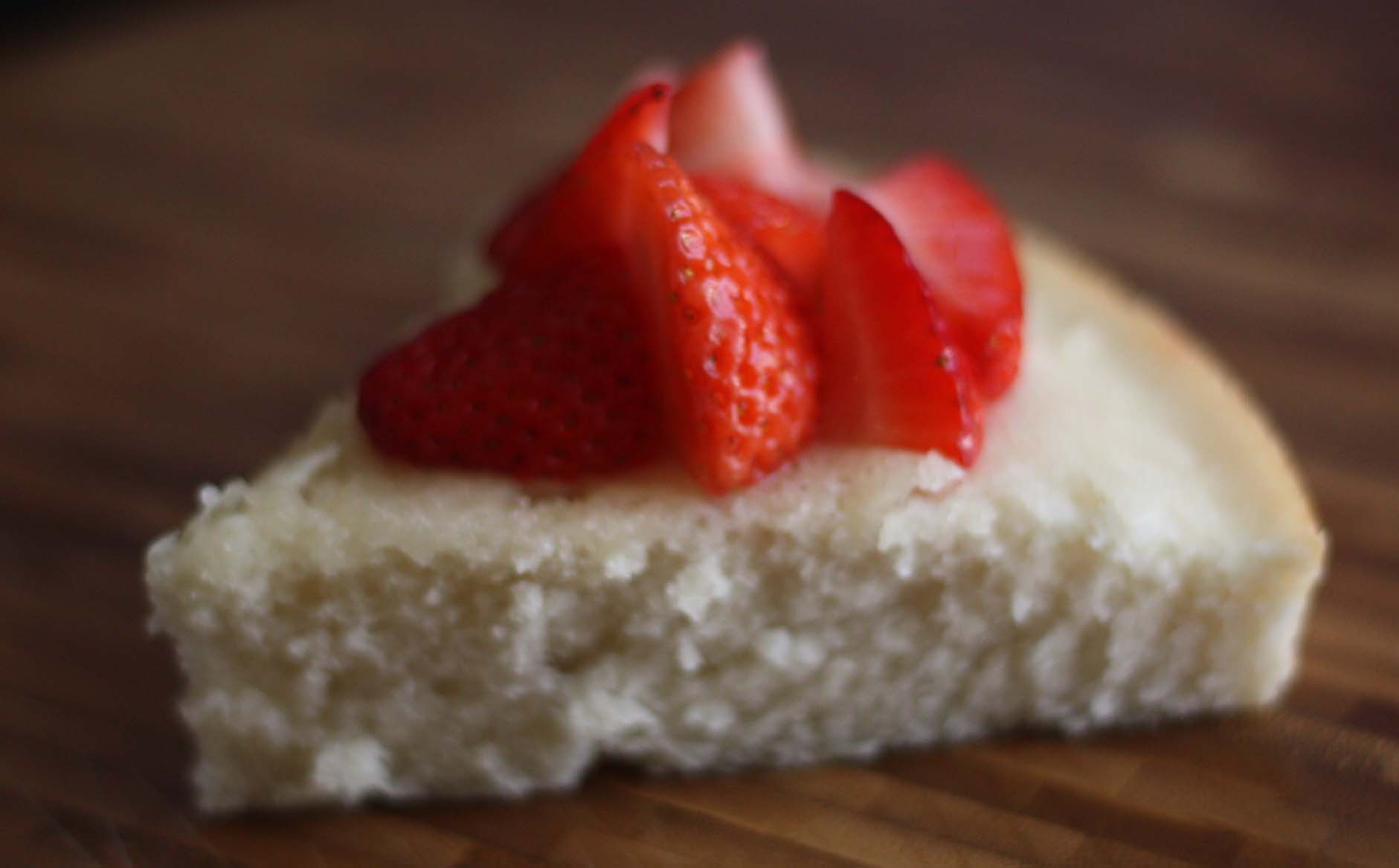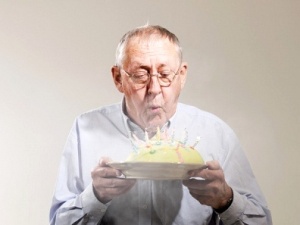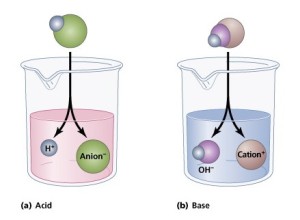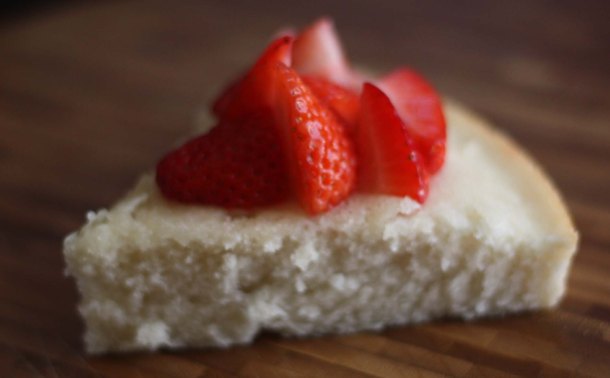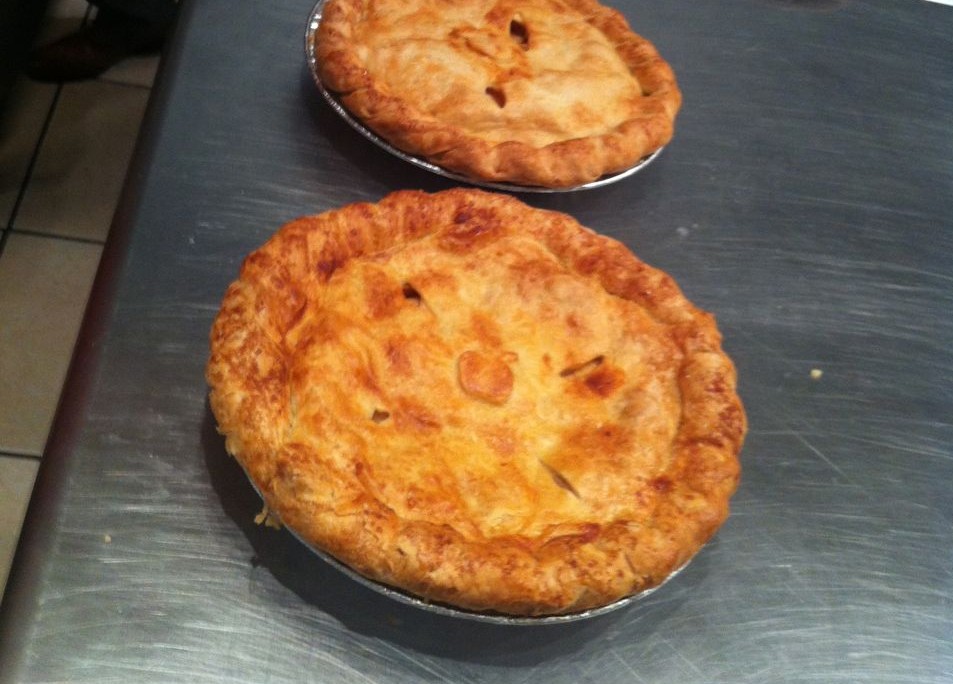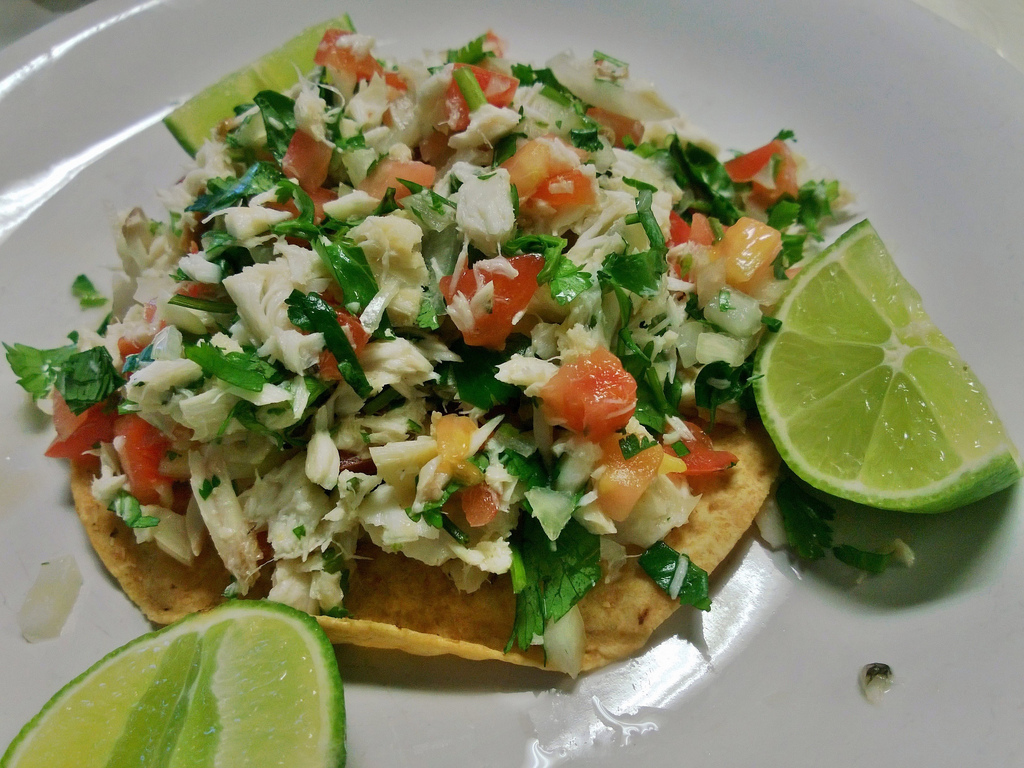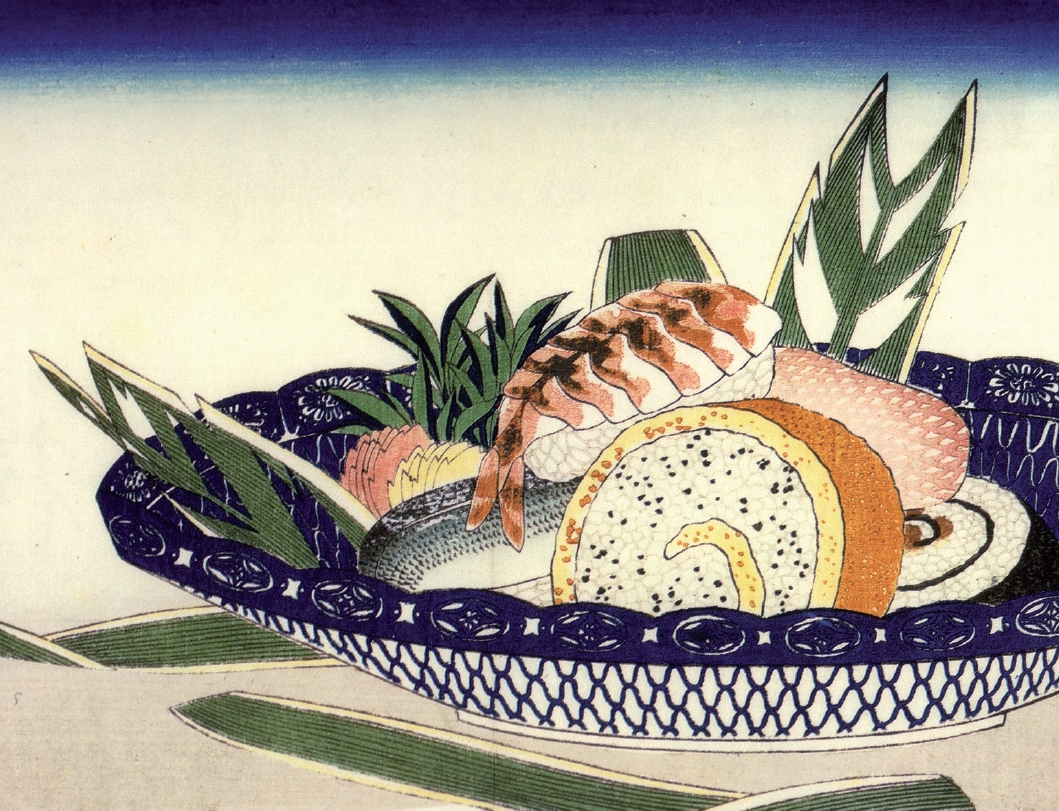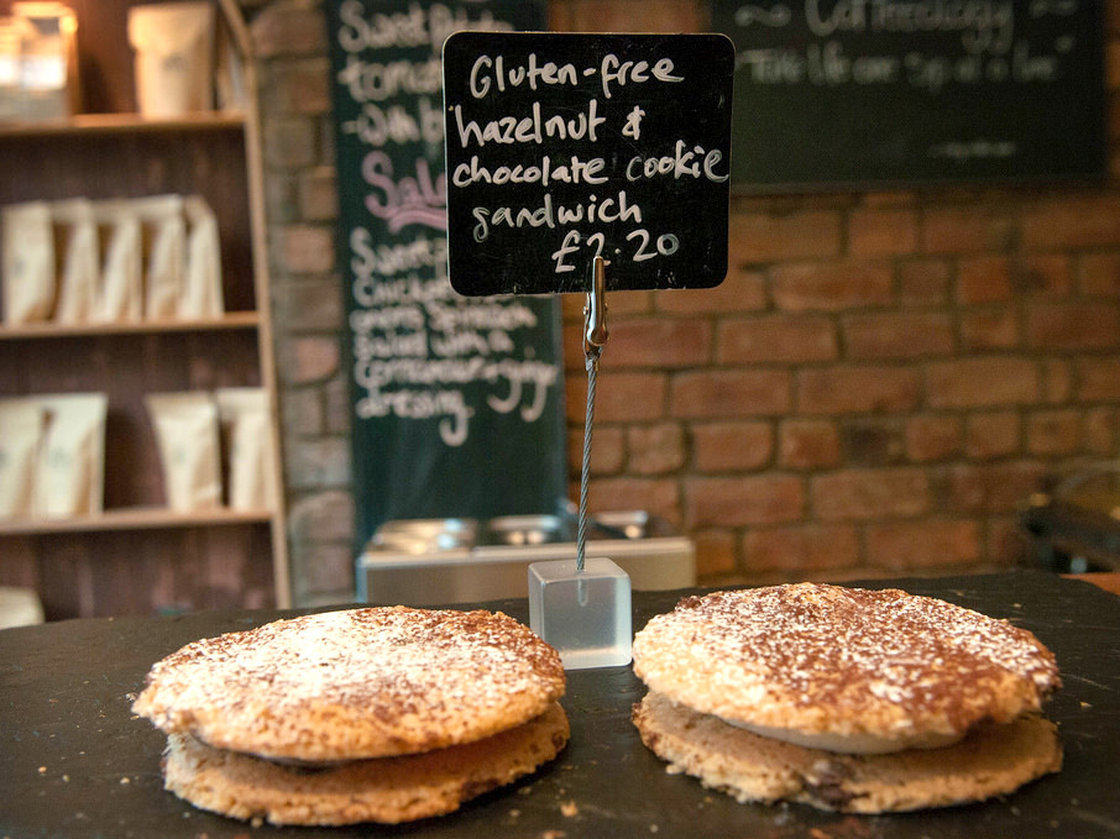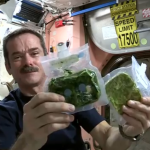Simple Vegan Strawberry Shortcake
With increasing numbers of people embracing dietary-restricted, vegetarian, and vegan lifestyles, birthday parties are becoming more complex. Consider the simple birthday cake. Everyone should be able to partake in its delicious sugary goodness; however, this can prove difficult. Specifically, how can you bake a cake if you cannot use one of the most important components, eggs?
In addition to holding the cake together and adding the characteristic spongy texture, eggs are important contributors to the leavening of many baked goods. This is especially true for any recipe that adds multiple eggs to the batter like an angel food, chiffon, or sponge cakes. Leavening agents release or trap air in the batter, which is essential for expansion during baking. This causes these treats to become fluffy and airy. When egg whites are beaten, they foam, which when combined with the gluten networks forming in the batter, trap tiny air bubbles. The proteins from the eggs stabilize the bubbles. During the baking process, the water evaporates and the bubbles expand to create a porous network within the starch and proteins of the egg-flour mixture. This causes the cake to rise and have that delicious sponge-like texture.
But how do we entrap air in a cake without eggs? One solution is acid-base chemistry! The same reaction that makes science fair volcanoes blow their tops can also be used in the service of baking. The Brønsted-Lowry acid-base theory defines an acid as any molecule that donates a hydrogen ion (H+) and a base as any molecule that can accept a hydrogen ion. When dissolved in a solution like water, acids and bases break down into their component ions, or charged particles. An acid releases a positively charged H+ ion, while a base forms a negatively changed anion, which can accept H+ ions. In solution, the positively charged H+ ions are strongly attracted to the negatively charged base and bind together to neutralize each other’s charge. Wine, lemon juice, vinegar, and sour milk are examples of cooking acids, while baking soda and baking powder are common cooking bases.
Now back to the cake. By substituting eggs with baking soda and vinegar, you can create bubbles in the form of carbon dioxide, CO2 ,which make your cake rise. As mentioned, baking soda or sodium bicarbonate, NaHCO3, is a base and vinegar, CH3CO2H, is acetic acid.
In the solution, the acetic acid releases an H+ ion and the baking soda becomes charged and can accept the H+ ion. Formation of component acids and bases in water:
Baking soda (base): NaHCO3 → Na+ + HCO3–
Vinegar (acid): CH3CO2H → H+ + CH3CO2–
Next The HCO3 – combines with the H+ from vinegar to form a new acid carbonic acid, H2CO3. The overall reaction of baking soda and vinegar is as follows:
NaHCO3 + CH3CO2H → CH3CO2Na + H2CO3
Finally, the carbonic acid, H2CO3, breaks down further and forms water and carbon dioxide because of acid-base chemistry:
H2CO3 → H2O + CO2
The CO2 bubbles become trapped in the cake mix and cause the cake batter to rise during baking. There you have it, a fluffy cake without eggs! Below is a recipe for a vegan strawberry cake so that you can practice acid-base chemistry and have a delightful sweet that everyone at your next party can enjoy.
Strawberries and Syrup
1 package of strawberries
2 tbsp sugar
1. Wash and cut strawberries into halves.
2. Sprinkle the sugar over the strawberries.
3. Let the strawberry mixture sit in the refrigerator for 2–3 hours.
Vegan Shortcake
1 3/4 cups cake flour
1 cup sugar
1 tsp baking soda
1/2 tsp salt
1 cup warm water
1 tbsp vanilla extract
1/3 cup vegetable oil
1 tsp distilled white or apple cider vinegar
1. Preheat the oven to 350 °F
2. In a mixing bowl, whisk together cake flour, sugar, baking soda, and salt.
3. Stir in water, vanilla extract, vegetable oil, and vinegar. Mix vigourously until most of the lumps are gone.
4. Pour ingredients into a 9″ round cake pan.
5. Bake for 45–50 minutes, or until toothpick comes out clean. Let cool for 15–20 minutes.
6. Top the cake with the strawberry mixture. Optional: Add vegan or non-vegan whipped cream.
Online Resources
- Recipe adapted from Vegan Strawberry Shortcake by Vegan Housewives
- “The Science of Cake” article from The Guardian
- “How Does a Cake Rise?” video from Naked Science Scrapbook
 About the author: Vince C Reyes earned his Ph.D. in Civil Engineering at UCLA. Vince loves to explore the deliciousness of all things edible.
About the author: Vince C Reyes earned his Ph.D. in Civil Engineering at UCLA. Vince loves to explore the deliciousness of all things edible.

